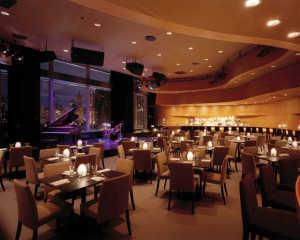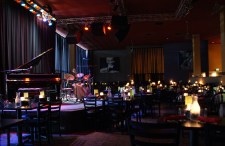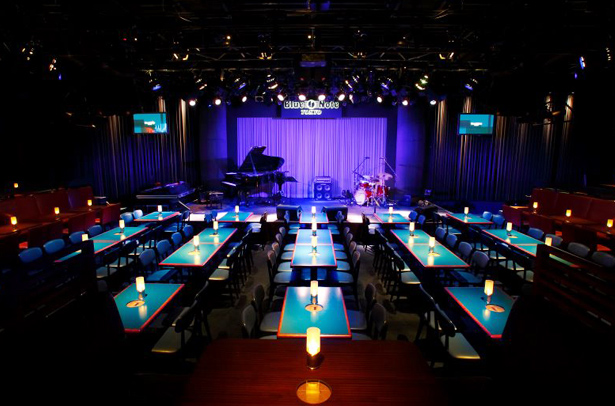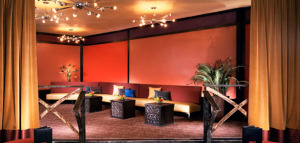Seven for Saturday - 7 John Coltrane Videos
 July 31, 2010 at 6:00 AM
July 31, 2010 at 6:00 AM Do you have some time on your hands? Not too sure on what to do with it? Here's an enjoyable way to pass some of that time. I picked 7 videos of John Coltrane's live performances for your viewing pleasure! Enjoy ~
The first 4 videos are from a 1960s show called "Ralph Gleason's Jazz Casual".
Coltrane performs here with his classic quartet: Coltrane on Tenor and Soprano Sax; McCoy Tyner on Piano; Jimmy Garrison on Bass; and Elvin Jones on Drums. Songs performed are: Afro Blue (M. Santamaria); Alabama (J. Coltrane); and Impressions (J. Coltrane).
It was originally recorded at KQED Studios in San Francisco, CA on November 1, 1963 and first broadcast February 18, 1964 on the National Educational Television Network. This is the only known North American television appearance of the John Coltrane Quartet.
Naima is a ballad composed by John Coltrane in 1959, and named after his then-wife, Juanita Naima Grubbs. It first appeared on the album Giant Steps, and is notable for its use of a variety of rich chords over a bass pedal. It is mainly made up of a slow, restrained melody, though there is also a brief piano solo.
One of Coltrane's most famous compositions, he recorded it numerous times. Naima may be found in Live! at the Village Vanguard, The Complete 1961 Copenhagen Concert, Afro-Blue Impressions, Live at the Village Vanguard Again!, among other albums. Naima has since become something of a jazz standard, covered by many other musicians. (wikipedia)
John Coltrane does a modal rendition of the Rodgers and Hammerstein song "My Favorite Things" (from The Sound of Music.) Here is a 10.5 minute video version of it performed by his quartet with Eric Dolphy sitting in on flute. (It looks like Eric Dolphy. Please correct if I'm wrong.)
This last video (28 March 1960) is lacking clarity but it is the only documented performance of John Coltrane with Stan Getz. Depending on who you ask, they are either doing Hackensack (Thelonious Monk) or Rifftide (Coleman Hawkins). Oscar Peterson sits in on piano with Paul Chambers (bass) and Jimmy Cobb (drums).
Even if you're not a Coltrane fan, I hope that you found a video today that piqued your curiosity and enticed you into finding out more about his music and/or his life! 







Reader Comments (4)
Title of tune not important, the Getz/Coltrane performance is Excellent! By 28 Mar 1960, JC clearly had already broken out of the mold & there was no going back. Great point early in video when SG looks at his sax while JC is playing as if thinking, "can a sax be played like that?"
Hi Robert!
Was Coltrane ever really in a "mold"? That's more of a rhetorical question than anything.
I'm not a Coltrane expert. To me, however, he always seemed to be compelled by something that was just beyond the "comfort zone" of wherever his mind was at the current moment. Does that make any sense?
I looked at the video again with your observation re: Stan Getz in mind. That made me smile. Thank you for that.
I like your "comfort zone" and "compelled" is a word that JC might well have used about himself. So, how about "By 28 Mar 1960, we can see John Coltrane compelled to explore beyond the comfort zone of many tenor saxophonists at that time" as a better description of his performance with Stan Getz. The performance chronology in Lewis Porter's 1998 biography, John Coltrane - His Life & Music, indicates the performance was at the German Museum in Munich. In the same book Wayne Shorter is quoted as describing JC around that time wanting to "speak the English language backwards, and not really in a playful way. It was like, to speak backwards, to get at something else. To break patterns, I guess. It was that innovative spirit that he had."
Yes!! That sounds perfect, Robert! "By 28 March 1960, we can see that John Coltrane was compelled to explore beyond the comfort zone of many tenor saxophonists of that time."
I have the 1998 Lewis Porter bio about John Coltrane listed in the "Memoir and Biography" section of the website but it's not a part of my book collection yet. :(
Are there any other Coltrane biographies that you feel people should be aware of? Please let me know.
I was aware of the idea that JC wanted to speak English backwards (I'm not sure where I heard it, though). That's an example of never settling, never being content by resting on his laurels (imho). Another way of saying that is "JC always pushed the envelope".
~~~